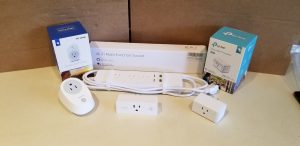When I talk home automation to my friends, some of them fade out and their eyes gloss over. Others find their initial enthusiasm dies off with “that’s gotta be really hard to set up.”
Nothing could be further from the truth these days.
Home Automation has undergone a revolution since I first became involved. Back then, you had a choice between The Clapper and X10, with each having considerable limitations.
Through the 2000s, additional technologies, Zigbee, Z-Wave, and Insteon, were born. Each of them has their own strengths, their own weaknesses, and their own quirks as they matured.
Aside from the Clapper, which I’ve alwasy considered more of a gag than anything else, each of the other automation technologies required a good bit of work. Tinkering, at the least. You need a hub to handle communications, a software interface on a PC to handle the commands and notifications, and patience to work out the bugs. Lots of patience.
Today, we’ve got a wide range of great products – high quality, low price, tremendous reliability – that were unimaginable just a few years ago.
Especially exciting are today’s Wi-Fi products, which only require your router as a hub, many of whcih are simple plugs that don’t even need you to take off a wall plate. They’re so easy to set up, your grandparents are doing it.
Add in Amazon Alexa or Google Home, and you can easily have voice control, as well.

Here’s a set of common Wi-Fi automation products. We’ve gto a couple of TPLink plugs, a WeMo plus, and a generic Wi-Fi power strip that has three individually addressable/controllable outlets and two individually controllable USB ports, typically costing $25 or less each.
I make a point of explaining to my disappointed friends that with a set of Wi-Fi plugs or power strips, they can automate, lamps, fans, anything that can plug into the wall – and then control it by voice!
The setup is basically an industry standard now – you download the product’s app, plug the device in, connect to it via the app (or directly to its internal Wi-Fi network), supply the credentials to your Wi-Fi network and let it log in.
Done. You now have a device that you can control via app on your phone in roughly 90 seconds from the moment you downloaded the app.
What’s more, they almost universally have a skill for Alexa or Google home. SO, for example, you activate the skill for that product in Alexa, it finds the devices, and adds them to the list in your Smart Devices section. You can name it and then tell Alexa to turn it off or on.
You can do the same thing with bulbs – screw them in, flip the switch, and connect via app.
Using in-wall switches and outlets is still a better choice – it is cheaper to put in one Zigbee Dimmer switch for your kitchen than to replace the bulbs in 9 pot lights!
Don’t let that stop you from getting started. You don’t have to be an electrician or even be very handy to start building your own Smart Home today.
SmarterHome.club is the website for our Facebook community, The Smarter Home Club – which is an umbrella for all kinds of smart home technologies – home automation, security, custom electronics, weather stations, alternative energy, you name it. DIY focused.
If you’re interested in joining the Smarter Home Club’s Facebook group, please follow this link:
